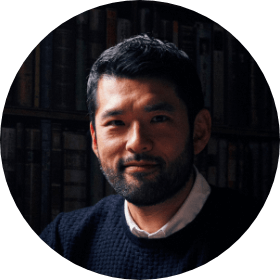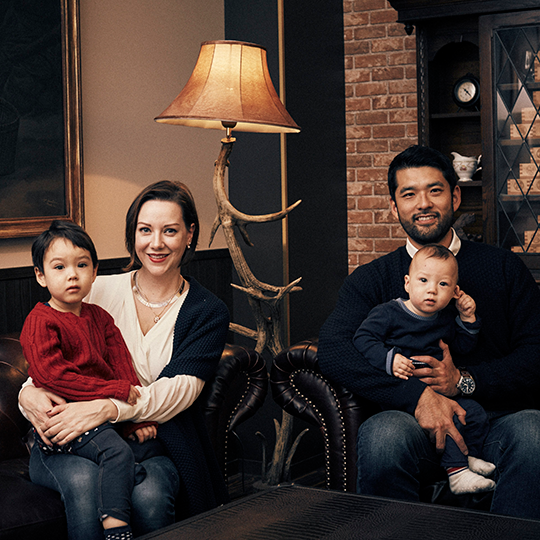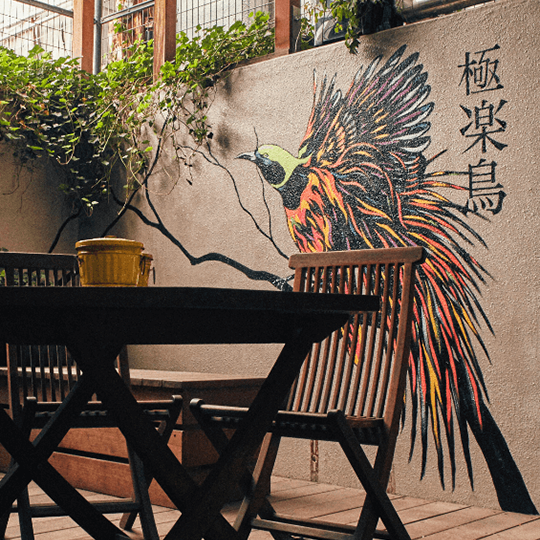"Sugamo, Otsuka and Komagome are open-minded areas that embrace diversity"
Q: Why did you open RYOZAN PARK?
A: I had the idea when the Great East Japan Earthquake happened. I was living in the USA when that happened. The USA was built by immigrants. They all come from different places but they proudly call themselves American. I think that when a country has a culture of recognizing diversity, that vitalizes the country. After the earthquake, I began providing support, working with friends in the USA and Japanese students from a variety of backgrounds. During the course of that work, I realized that in order to help Japanese people get back on their feet after the disaster, we needed a society that would accept diversity. Japan needed a new kind of community where people working toward their dreams could live as one big family, no matter what their nationality or race.
Q: Why did you choose a share house and shared office to create that new community?
A: For as long as I can remember, my mother's side of the family has run a business, so I was always surrounded by many other adults in addition to my family. That early experience of living in a diverse environment gave me the idea for my share house. Because work is a part of life, I decided that the shared office should be part of the building. I wanted to connect the share house where people would live with a shared office where people would work and create a little village. And I decided to created that community in Sugamo where I grew up. Making a difference begins with the people around you. I believe that even if you're starting small, you'll gather like-minded people and together you can turn a tiny trickle into a big river that will bring change to society at large.
"I wanted to start by creating a new community in Sugamo, where I grew up."
Q: What do you think makes your hometown of Sugamo and nearby areas like Otsuka and Komagome great places to live?
A: It's difficult for me to think of those neighborhoods as one area - they're all unique. Toyoshima Ward also includes places like Ikebukuro, Mejiro and Zoshigaya. With so many different neighborhoods, this area reminds me of a broadleaf forest with all kinds of different trees. Think of the forest around Meiji Shrine. It's said that people planted all different species of broadleaf tree there to create a forest that would last forever. When you're planting a forest, the key is to leave the trees to grow, You don't need to do anything; an ecosystem will develop all by itself. The same goes for this area - it's a place where all different people can live without anyone trying to put them in a box. A mixed bag like that is how you end up with an interesting culture, wouldn't you say? And in Sugamo, Otsuka and Komagome in particular, you've got this mixture of traditional and ultra-modern ways of live. I think they're open-minded areas that embrace diversity.
"Ties with others are something we must always keep in mind. That's the key for the future."
Q: So what is your aim for RYOZAN PARK in future?
A: I want to keep working on the concept of creating villages in Tokyo. I have other share houses in mind - a share house for families, a share house for couples, a share house for senior citizens and so on. I also think it would be interesting to have student accommodation where international students and college students can have discussions, or a cafe where creators can get together. A village is a place where all kinds of people come together, live together, work together, raise children together. It's a community. It's like the tenement houses from the Edo Period [1603-1868] or the way we used to have the whole extended family living under one roof. When we're building modern villages, it is essential to accept and support anyone who comes to them with an ambition. There's one teishoku (set meal) restaurant where I often go for lunch, and when I head back to work, the staff always say "See you next time!" And whenever I've decided to start something new like RYOZAN PARK, people have welcomed me with open arms. That's the kind of places Sugamo, Otsuka and Komagome are - you can see so much of the past here, but there's also a keenness to create a new culture. It's been a while since I've heard the word ohitorisama (a Japanese term for someone who lives alone and often does things like eating out alone), but any way you slice it, I think being alone is lonely. The warmth of a family is something that humans instinctively crave. It's something so basic, but it's so important, don't you think? I think ties between people are what Japan needs now. I can't create a whole new future single-handedly, but I believe that if you remember what's really important and live each day as if it's the last, that gives momentum for tomorrow and will eventually open up a new future down the road.




